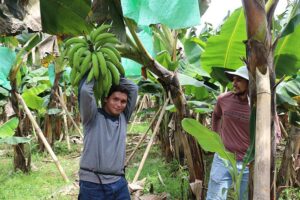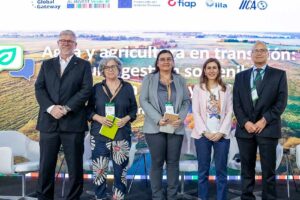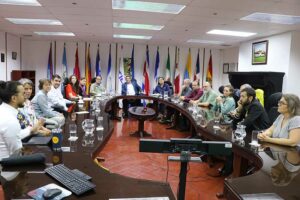CATIE at COP29 outlines the roadmap for cooperation opportunities for Latin America and the Caribbean
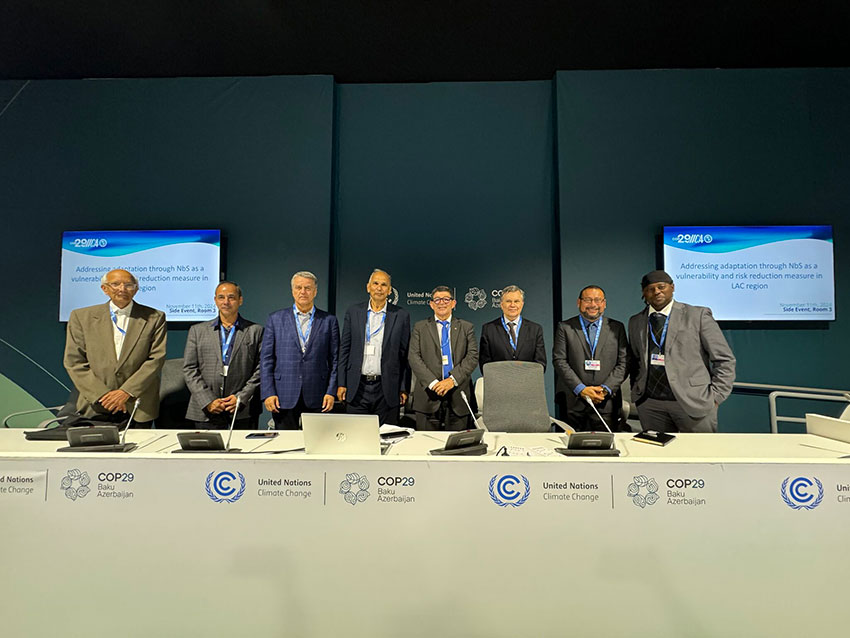
- During the world conference on climate change, important projects in which CATIE is a key part were presented and contacts were established for future collaborations.
The city of Baku, Azerbaijan, hosted the 29th United Nations Climate Change Conference, known as COP29. This is the most important meeting on the subject, as it brings together most of the member countries of the United Nations and the United Nations Framework Convention on Climate Change (UNFCCC).
The main focus on this occasion was financing to address climate change, so the presence of international cooperation agencies and initiatives was also relevant. In addition, initiatives and research and climate action centers were present, among which the Tropical Agricultural Research and Higher Education Center (CATIE) stood out as a reference in these areas of work in the Latin American and Caribbean region.
CATIE's participation was in response to the worldwide presentation of some projects and initiatives of which it is a key part, such as the SERVIR Central America hub and the MAF-Livestock-HN project in Honduras.
The conference also provided an opportunity for CATIE, through its Director General, Luis Pocasangre, to hold meetings with leaders, Ministers of Agriculture and Environment, and potential donors and collaborators who can open cooperation and financing opportunities for CATIE's work in the region.
“CATIE's agenda of research, education and development projects is very attractive for funding, as we work on most of the topics discussed at COP29, such as soil, water, forest, biodiversity, gender, indigenous communities, bioeconomy, food security, productive landscapes and biostatistics, topics aimed at mitigating and adapting to climate change and which are a priority for the planet,” said Pocasangre. “As a research, education and development center working in the tropical region, we are very attractive to form regional consortia and I am sure that many opportunities will present themselves in the near future,” he added.
Below is a detail of some of the relevant activities in which CATIE took part in COP29:
Global launch of the SERVIR Central America Hub
In a panel in which CATIE's Director General, Luis Pocasangre, shared with Luis Ramos, USAID Climate Change Project Management Specialist, and moderator Kate Calvin, NASA Senior Climate Advisor, the global community was introduced to the SERVIR Central America regional hub, an initiative that will provide innovative solutions to urgent environmental problems using satellite data and geospatial technology.
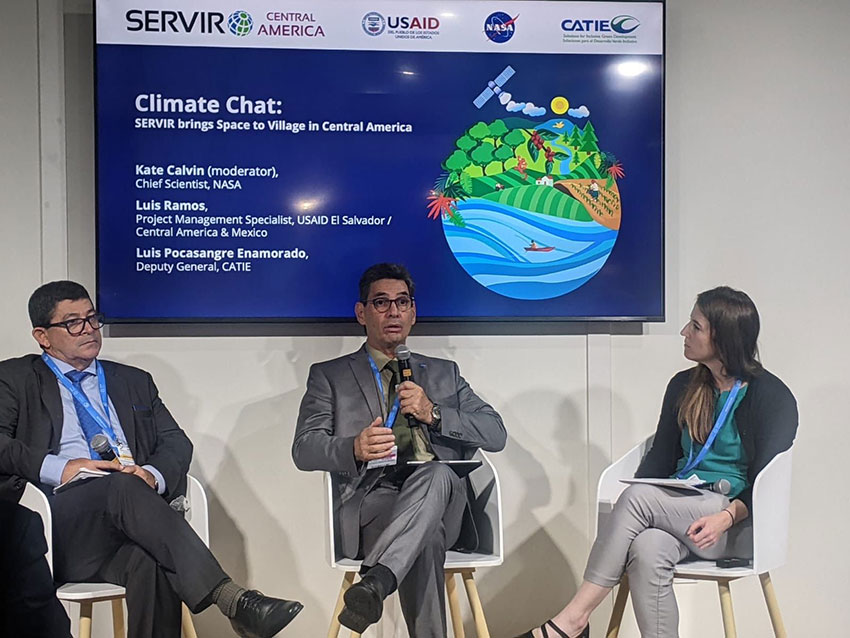
This collaboration between USAID, the National Aeronautics and Space Administration (NASA) and CATIE will support evidence-based decision making at the local, national and regional levels, focusing on climate resilience, agriculture and food security, ecosystem and carbon management, air quality, health and water security, with a strong emphasis on gender equity and social inclusion.
Presentation of the Honduras MAF-Livestock-HN Project
The NDC (Nationally Determined Contributions) pavilion at COP29 featured the project “Transforming the Honduran livestock sector into a low-carbon economy” (MAF-Ganadería-HN), implemented by CATIE and led by the Honduran Ministry of Natural Resources and Environment (SERNA) and the Ministry of Agriculture and Livestock (SAG), with funding from the Mitigation Action Facility (MAF).
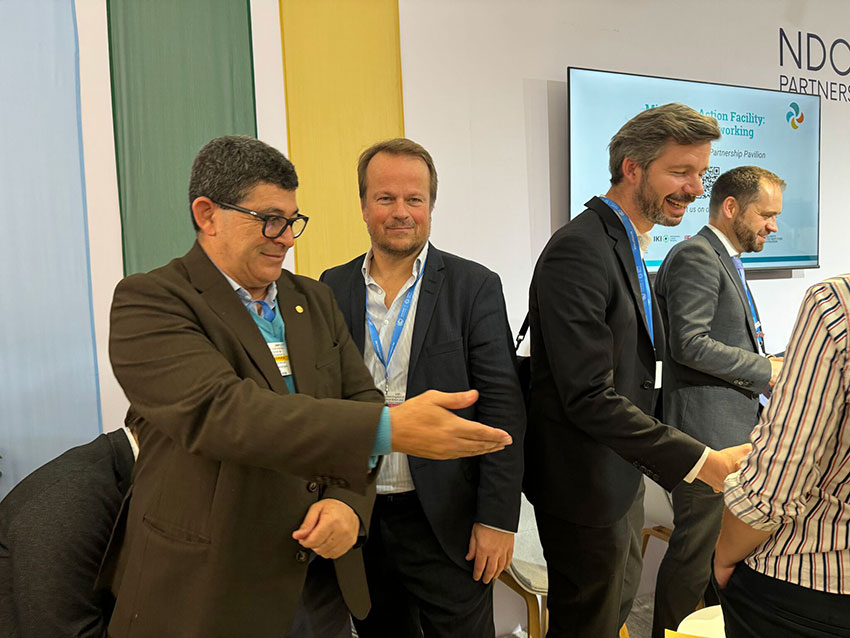
This project seeks to initiate the process of decarbonization of the livestock sector in Honduras and make it an example for Central America and the Dominican Republic, supporting the sector to move towards improved profitability and decarbonization, thus contributing to the country's emission reduction goals set out in its NDC and the Sustainable Development Goals.
The project has public-private participation, where the credit component is managed by a bank (BANHPROBI) with soft loans for producers, which is innovative. In addition, the implementation of silvopastoral systems and good agricultural practices is one of the main components of the project to achieve emissions reductions.
Other relevant events
In addition to the presentation of these projects, Director Pocasangre participated as a panelist in various events that took place during the conference. The first of these was the side event on “Nature-Based Solutions for Agriculture that is More Resilient to Climate Change” organized by the Inter-American Institute for Cooperation on Agriculture (IICA).
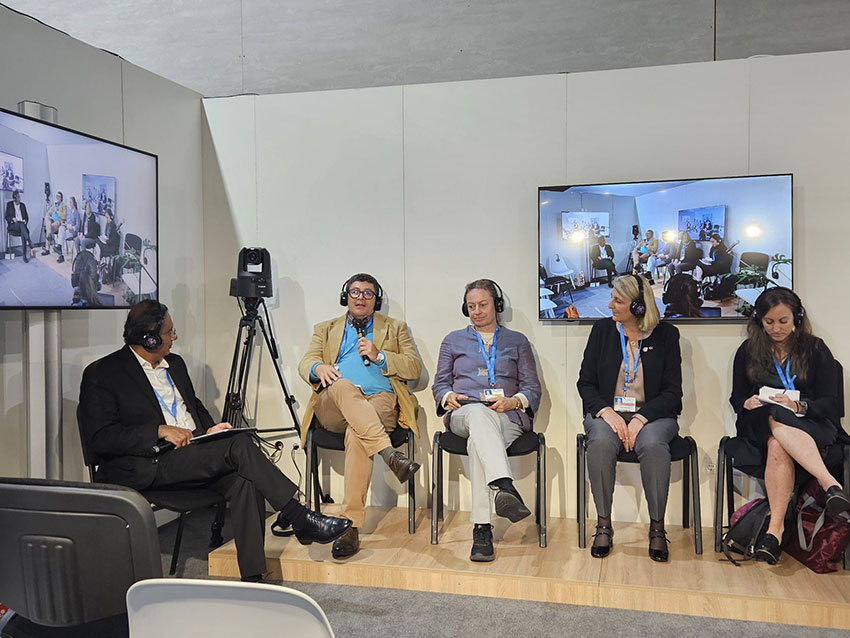
He was also part of the session on seascapes organized by the International Union for Conservation of Nature IUCN, where he addressed the achievements in conservation and restoration of mangroves in Montecristi, Dominican Republic, a project that was implemented by CATIE and funded by the International Climate Initiative (IKI) of Germany and the Caribbean Biodiversity Fund (CBF). He also participated in the El Salvador pavilion as a panelist on the topic of forest restoration and productive systems.
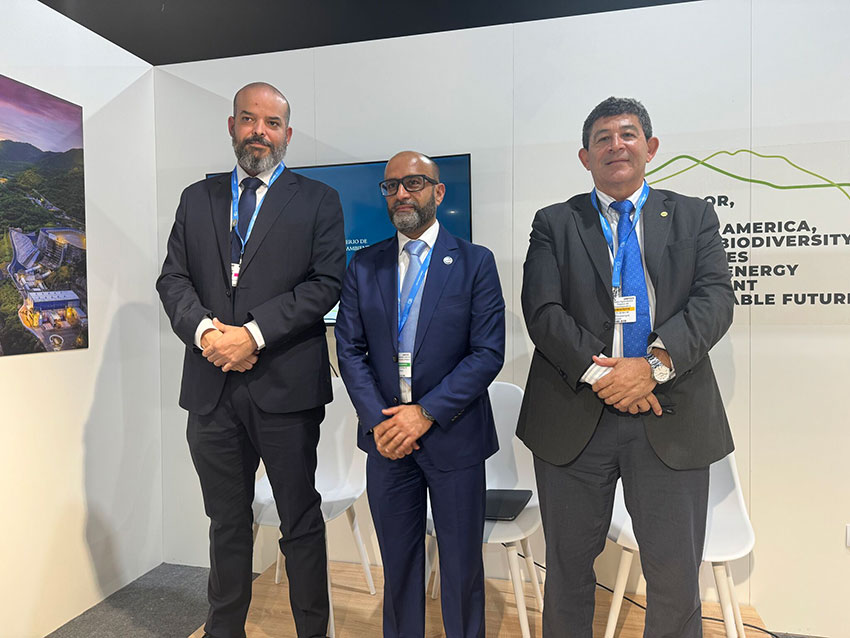
Finally, CATIE's presence at COP29 also served to glimpse opportunities for cooperation and participation of the institution in future projects or those already underway, highlighting the Lempa River Basin Management Project in El Salvador, which was presented by the Minister of Environment and Natural Resources of that nation and in which CATIE will be able to contribute thanks to its extensive experience in training.
Written by:
Alejandro Portilla Navarro
Communicator
Communications and Marketing Office
CATIE
alejandro.portilla@catie.ac.cr

